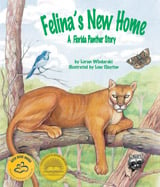Alignment to Standards for MI

| Grade | Number | Standard |
|---|---|---|
| 1 | L.HE.01.11 | Observable Characteristics- Plants and animals share many, but not all, characteristics of their parents. |
| 1 | L.HE.01.11 | Identify characteristics (for example: body coverings, beak shape, number of legs, body parts) that are passed on from parents to young. |
| 1 | L.HE.01.12 | Classify young animals based on characteristics that are passed on from parents (for example: dogs/puppies, cats/kittens, cows/calves, chicken/chicks). |
| 1 | L.OL.01.21 | Describe the life cycle of animals including the following stages: egg, young, adult; egg, larva, pupa, adult. |
| 1 | L.OL.E.2 | Plants and animals have life cycles. Both plants and animals begin life and develop into adults, reproduce, and eventually die. The details of this life cycle are different for different organisms. |
| 2 | L.HE.02.13 | Identify characteristics of plants (for example: leaf shape, flower type, color, size) that are passed on from parents to young. |
| 2 | L.HE.E.1 | Observable Characteristics- Plants and animals share many, but not all, characteristics of their parents. |
| 2 | L.OL.E.2 | Plants and animals have life cycles. Both plants and animals begin life and develop into adults, reproduce, and eventually die. The details of this life cycle are different for different organisms. |
| 3 | E.ES.03.52 | helpful or harmful effects of humans on the environment (garbage, habitat destruction, land management, renewable and non-renewable resources). |
| 3 | E.ES.E.5 | Humans depend on their natural and constructed environment. Humans change environments in ways that are helpful or harmful for themselves and other organisms. |
| 3 | L.EV.03.12 | characteristics and functions of observable body parts to the ability of animals to live in their environment (for example: sharp teeth, claws, color, body covers). |
| 3 | L.EV.E.1 | Different kinds of organisms have characteristics that help them to live in different environments. |
| 3 | L.OL.03.32 | Identify and compare structures in animals used for controlling body temperature, support, movement, food-getting, and protection (for example: fur, wings, teeth, claws). |
| 3 | L.OL.03.42 | Classify animals on the basis of observable physical characteristics (backbone, skin, shell, limbs, scales). |
| 3 | L.OL.E.3 | Organisms have different structures that serve different functions in growth, survival, and reproduction. |
| 3 | L.OL.E.4 | Organisms can be classified on the basis of observable characteristics. |
| 3 | S.RS.03.18 | Describe the effect humans and other organisms have on the balance of the natural world. |
| 4 | L.EC.E.1 | Organisms interact in various ways including providing food and shelter to one another: Some helpful: others are harmful to the organism and other organisms. |
| 4 | L.EC.E.2 | When the environment changes, some plants and animals survive to reproduce; others die or move to new locations. |
| 4 | S.RS.04.18 | Describe the effect humans and other organisms have on the balance of the natural world. |
| 5 | L.EV.05.14 | Analyze the relationship of environmental change and catastrophic events (for example: volcanic eruption, floods, asteroid impacts, tsunami) to species extinction. |
| 5 | L.HE.05.12 | Distinguish between inherited and acquired traits. |
| 5 | L.HE.M.1 | Inherited and Acquired Traits - The characteristics of organisms are influenced by heredity and environment. For some characteristics, inheritance is more important; for other characteristics, interactions with the environment are more important. |